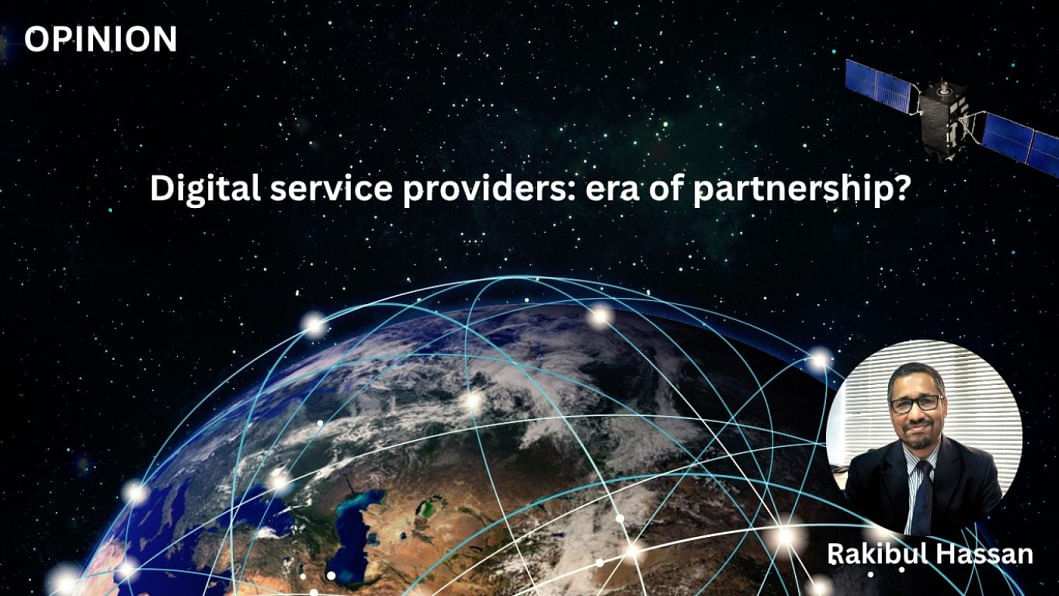Digital service providers: era of partnership?

When I first joined the Bangladesh Telecommunication Regulatory Commission (BTRC) back in 2007, our country's telecom landscape was dominated by mobile services.
Landline services (also known as PSTN) were quickly becoming obsolete. Mobile phones were getting cheaper, mobile call rates were going down, and naturally, more and more people started using them.
Back then, the mobile industry was maturing fast—they could connect with each other, and even international calls were being handled through BTCL.
To make the system more transparent and fair, a policy was introduced called the International Long Distance Telecommunication Services (ILDTS) policy. The main idea was to bring order and clarity to how calls were being handled and billed. A big part of the policy was to separate out the transmission layer and make it easier for smaller operators to connect to the big players. It also helped the government track and earn from calls, especially those that were previously considered "illegal" or untraceable.
Fast forward to 2025. The telecom world has changed massively. Many parts of that old ILDTS policy have become outdated. Instead of helping, it's now adding extra costs to customer services. The government has realized this and is working on making changes.
In recent BTRC meetings, a notable shift occurred as government officials and telecom providers engaged in open, meaningful dialogue. The BTRC Chairman and Telecom Advisor acknowledged long-standing industry challenges like overregulation and lack of collaboration. They emphasized the need for deregulation and industry partnerships, highlighting unified billing as a key step to simplify services for both customers and providers.
Over the years, I've had the chance to travel around the world representing BTRC. I saw firsthand how countries were benefiting from industry partnerships. They were finding smarter ways to use spectrum (the invisible space in the air that carries our internet), investing together in infrastructure, and reducing costs for everyone. In Bangladesh, we don't manufacture our own telecom equipment. Every piece of technology—be it a mobile tower or a fiber cable—is bought using expensive US dollars. That's why we should have started sharing infrastructure twenty years ago. Better late than never—it's finally happening.
Back in 2008, I was really excited about a concept called Wi-Fi offloading. It's a simple idea with huge benefits. When mobile networks get crowded and expensive to operate, service providers can shift some of that traffic to Wi-Fi networks. For this to work, Internet Service Providers (ISPs) and Mobile Network Operators (MNOs) need to work together. This kind of partnership can lower the cost of using mobile data and reduce pressure on mobile networks.
Imagine this: You're in your home in Dhaka. Your mobile signal is weak, but your broadband Wi-Fi is strong. With VoWiFi—voice calls over Wi-Fi—you could make crystal-clear calls through your home internet instead of the mobile tower. This improves your experience and also saves the mobile company some bandwidth. Now imagine this happening not just in your home, but across cafes, offices, and public spaces where Wi-Fi is available. That's less load on mobile towers, cheaper operations, and happier customers. It's a win-win for both ISPs and mobile companies.
Partnerships like this require planning. The two types of companies need to share networks, coordinate billing, and ensure quality service. But once the foundation is laid, the possibilities are endless. ISPs can gain new users, MNOs can improve call quality, and customers benefit the most—with better service and potentially lower prices.
But there's one more key player in this game: NTTN, or Nationwide Telecommunication Transmission Network. Their role is to provide transmission services—the highway through which data travels. But there's a line they shouldn't cross. NTTN was never meant to provide direct internet access to customers. Whether it's for a government office or a small household paying 400 taka a month, the regulation says NTTN should focus on transmission, not compete with ISPs in delivering internet to end users. This boundary must be respected.
The future of Bangladesh's telecom sector is heading for major transformation. Mobile operators are currently losing ground to Wi-Fi, but the arrival of 5G and the growth of Fixed Wireless Access (FWA) could rebalance the market. With proper fiber connectivity to mobile towers, FWA can offer high-speed internet without cables, challenging broadband providers' long-held edge in speed and stability. Additionally, technologies like Starlink may chip away at ISP revenues, especially in remote areas. To stay competitive, ISPs may need to consider partnerships, mergers, or acquisitions.
Despite these disruptions, there is reason for optimism. BTRC is developing a new regulatory framework with clear roles for three distinct layers of digital service providers. This model aims to reduce unnecessary regulatory friction while enabling innovation and growth. Regulation should be like air: essential, invisible, and never suffocating.
In today's world, the fourth generation of telecom regulation is all about partnership. The industry, the ministry, and the regulator must work together to solve each other's problems. We are finally seeing this in Bangladesh—and I can't help but feel hopeful.
If we continue on this path—building trust, sharing resources, and focusing on the people—Bangladesh can leap into the future of connectivity. It's not just about faster internet or clearer calls. It's about empowering every citizen with the tools to connect, create, and grow in the digital age.
And that future? Let's build Bangladesh at scale.
The author is the CTO of Link3 Technologies Limited and he writes on telecom, automation and AI.

 For all latest news, follow The Daily Star's Google News channel.
For all latest news, follow The Daily Star's Google News channel. 



Comments